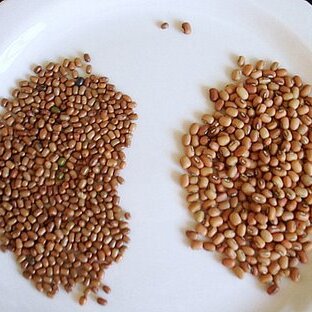Annual herbs, trailing. Stems slender, 60-130 cm, angular, sparsely pubescent. Stipules peltate, lanceolate, ca. 1.2 cm; petiole 5-10 cm; leaflets deeply 3-5-lobed, 5-8 cm, lobes linear-lanceolate, ± hairy, margin entire. Racemes axillary, headlike; peduncles 5-10 cm; bracts lanceolate, ciliate; pedicels short. Flowers clustered 2-5 together. Calyx 2-3 mm; lobes 5, subequal. Corolla yellow, 5-6(-9) mm; standard cordate; wings obovate, auriculate; keel apex contorted. Legumes brown, cylindric, 2.5-5 cm × 4-5 mm, hispidulous, with obtuse beak, 4-9-seeded. Seeds yellow, brown, or variegated with black dots, elliptic, 4-5 mm; hilum white, linear.
More
A slender annual herb. It can be erect or creeping. The vines form a mat like cover over the soil. It is slightly hairy. The leaves have stalks. They are deeply 3 lobed. The lobes are narrow. The flowers are yellow. The fruit is a pod shaped like a cylinder. There are usually 7-8 seeds. They are small and yellowish brown.
It is a tropical plant. In Nepal it grows up to 1000 m altitude. It will grow on shallow dry soils. It is not tolerant of frost. It grows in areas with an annual rainfall between 380-1,730 mm. It grows in acid, neutral and alkaline soils. It grows below 1,300 m above sea level. It can grow in arid places. In Yunnan.
More
In grass at elevations around 1,000 metres.
Seeds are used in lentil soup. They are boiled, parched, fried in oil or prepared with salt as a snack. They can be ground into flour and mixed with other grains to make unleavened bread. In India is it made into Dahl and bean paste. The young pods are cooked as a vegetable.

